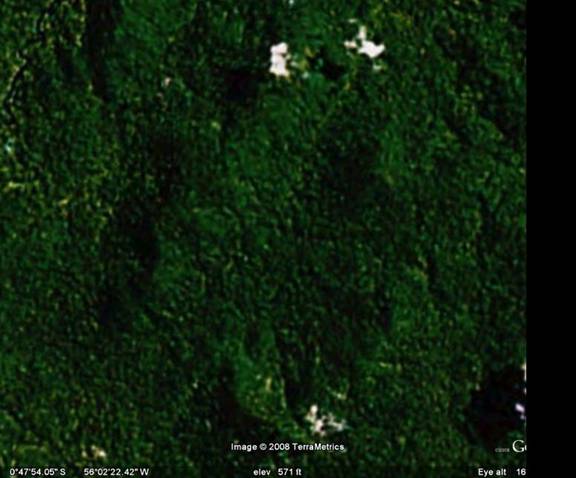Species of tropical trees and northern trees:
Those who know more about it than I report that there are more different kinds of trees in tropical forests than in those of the far north. Sometimes they get together and ask each other why. (Trees in the Tropics and the North A Heated Debate. ECONOMIST: 379 no 8476 81 6 May 2006.) I have an idea. I have floated this past a friendly tree expert, who was polite but not impressed. So as usual you will have to make up your own mind when I show you the evidence.
The most obvious thing about tropical forests is that they are very old. If tempers were better, I think there would be a good joke along the lines of: The tree in the Garden of Eden, did it have tree rings? If so, then the years those rings “recorded” never actually happened, and by extension neither did the fossil record. If not, then we ought to be able to tell if there is wood from the Garden, since it would have no rings in the center, and then normal rings would appear abruptly. And then some wag could at enormous expense make CO2 by burning coal, and make that CO2 the only carbon source for trees raised for many years in a constant climate, constant artificial daylight greenhouse and then make conditions typical of a temperate climate, with seasonal changes, for many years before harvesting the wood and planting it somewhere as a harmless hoax. Alas, such things are not funny in the present climate.
Tropical forests are old. Old forests have many species. Theories of why have been advanced including the notion that each species is imperceptibly fine tuned to a particular micro environment and the notion that all the trees are effectively occupying the same niche. The distributions must then be random.
Of course neither theory actually does much to explain the paradox. I mean if the trees are all effectively interchangeable, then by sheer random fluctuation some species should have increased while others vanished, at least on a local scale. Old forests should have few species. On the other hand, if each species has a micro niche it prefers, then there should be certain areas where the humidity or the soil is just right for that species, and you would have more than random fluctuations, at least on a local scale. But by and large you don’t. The same set of trees more or less will be found throughout the forest.
What would actually account for the number of species would be to reflect that trees, like animals, probably have a limit on their population size. If too many get in the same gene pool, diversity increases too much, fertility drops and the population collapses.
So let’s look at some trees.

This is a picture from Google Earth, elevation 571 feet, eye altitude 11,833 feet, so we are about two miles above the canopy of the forest. There is a lot of green. The canopy looks complete. This is in the Amazon watershed. There is computer artifact on the right side of the image.
Far to the west and still in the Amazon basin:

Another image of the Amazon region from Google Earth. Elevation 453 feet, eye altitude 13,482 feet. There are some clearings, but the forest again seems to fill available space.

Another image from Google Earth. This is the Congo watershed in Africa. Elevation 1,437 feet, eye altitude 13,588 feet.

Google earth. Burma (Myanmar). Elevation 3,505 feet. Eye altitude 16,516 feet. The artifact is larger and covers the Google Earth logo.
All of these are tropical forests with a large number of species of trees. Contrast that with an image from northern Siberia.

Google Earth. Northern Siberia. Elevation 533 feet. Eye altitude 17,647 feet.
There is no complete canopy. To be sure, the trees seem to follow the watercourses, but not strictly.
Here is an image far to the west in Russia:

Google Earth. Elevation 244 feet. Eye altitude 9,475 feet. Again the trees seem to grow in clumps. Again the distribution has a lot to do with terrain. But, notice, the clumps are about the same size despite the distance.
Here is an image from Canada.

Google Earth. Elevation 838 feet. Eye altitude 11,268 feet. Again there are clumps of trees. Again they like water, but again the clumpiness is on a comparable scale.
Well maybe there is something about cold weather. High altitude means cold weather just as high latitude does. Here is an image from Maine.

Google Earth. Elevation 3,116 feet. Eye altitude 11,675 feet.
This is a timberline. As you go up the grade and the weather gets worse, you go from an unbroken canopy to a zone of clumps of trees to no trees at all. Understandably, the clumpy zone is far narrower than as you proceed to higher latitudes. But the clumps themselves are on a completely different scale. They are much smaller. And instead of the serpiginous pattern we saw elsewhere, the pattern is more dappled.
So we have seen that in old forests, such as the Amazon, the Congo, Burma and New England, with a large number of species, the trees can exploit all available space, at least below timberline. Far to the north in Canada and Siberia, the trees occur in clumps of fairly constant size. There are few species, because the forest are young, dating no farther back than the ice age glaciers, and if they were to become confluent the gene pool in any one area would exceed what the trees can endure. At least so it would seem. The nice thing is that you can go to Google Earth and see whether the pattern seems consistent.
There have been 423 visitors so far.
Home page.







